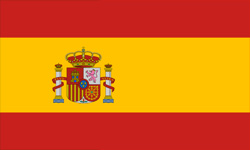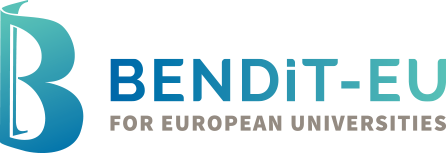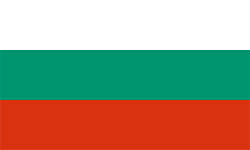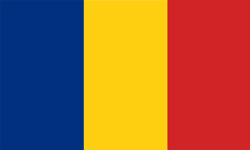Translate this page in: Traduci questa pagina in: Преведете тази страница на: Преведете тази страница на: Μεταφράστε αυτήν τη σελίδα σε: Traduzir esta página em: Traduceți această pagină în:


Project Description
Mission/ Vision/ Goals
BENDiT-EU creates synergies from complementary knowledge, skills and resources of the partners involved, and their unique value in providing real solutions and tangible responses to support the prevention, diagnosis and handling of burnout in medical students and allied health fields.
The project is not an alternative to the formal educational system, but rather a stepping stone to develop an extensive panel of skills, tools and normatives, which would enable their users to efficiently manage issues related to academic burnout, early in their professional formation.
BENDiT-EU consortium is multi-actor and comprises leading universities and practitioners active in the field of burnout education, normatives and digital approaches, that jointly will contribute to project activities and outputs, international networking, and sustainability of the results and impact achieved.
We will address burnout at multiple levels:
- at the organizational level, universities need policies that may help decision-makers in promoting an adequate quality of life for all their members;
- at the group level, professors, tutors, and other university staff should be helped to monitor the well-being of medical and allied health students as well as to offer reliable and effective solutions for burnout;
- at the individual level, students can be trained to recognize burnout symptoms and benefit from the support and instruments provided by their universities.
The objectives of the project are:
- raising awareness on academic burnout by providing on a wide scale up-to-date, evidence-based information for the identification, the prevention and the most effective interventions for academic burnout;
- improving the wellbeing of medical and allied health students, who are at risk of developing burnout or suffer from mild, moderate and severe forms of burnout;
- improving the skills of staff working in university support services, who directly address or refer to cases of academic burnout;
- providing recommendations to academic management for developing normatives and regulations designed to address and prevent academic burnout.

Main activities
BENDiT-EU will operationalize this steady multi-stakeholder partnership to deliver European value-added at three performance areas: building and maintaining targeted network; fostering mutual learning and harmonization in and beyond Europe; pooling international different kind of resources- to provide for greater scope and outreach of the results achieved.
We will produce a set of useful tools, newly developed training materials and targeted policy recommendations for addressing academic burnout in medical and allied health universities (see the Output section for more details), as follows:
- IO1: Burnout manual - pocket edition - a booklet containing state-of-the-art information about the identification, prevention and effective interventions for managing academic burnout.
- IO2: Burnout web platform - a self-screening and self-help web-based application for students.
- IO3: Curriculum for students and Train-the-trainer for support staff - teaching students and academic / administrative staff essential information about burnout symptoms, risk factors and resources, prevention, and available counseling and psychotherapeutic options.
- IO4: Policy toolkit - a set of recommendations for addressing academic burnout at the university level, along with a methodology for the adaptation of these recommendations.
The target groups
- The primary target groups are:
- Medical and allied health students;
- Professors/ students advisors;
- Student counseling specialists.
- The secondary target groups are:
- Student organizations;
- Occupational Medicine specialists;
- Medical employers;
- Private practice psychologists.

The Innovation approach
- THE CONTENT: the BENDiT-EU project offers the possibility of primary prevention of burnout and enables students to recognize burnout symptoms before they develop into frank psychiatric conditions. This kind of approach has been already developed, in academic environments, for health care professionals and teachers, but it is still rare in what undergraduate students are concerned, although they represent one of the most exposed categories to burnout;
- THE METHOD: the project provides credible evidence-based solutions which offer a multifaceted perspective, at the crossroad of education, information, and practice; in terms of human resources, the project includes a team of researchers with solid experience in this domain, with a multicultural perspective on the phenomenon of academic burnout.
- THE MEDIUM: the project allows efficient use of digital technology, as it has a distinct intellectual output, consisting in the design of a new digital application for measuring burnout. Considering the easiness in using this instrument and the presumable high familiarity of the target groups with digital technology, this has a high chance to represent a very costefficient tool for burnout screening in the academic environment, with a high potential of implementation. The participation in the project of partners from 6 different countries offers a good opportunity for this instrument to be cross-validated, before its use in academic communities.
- THE DIVERSITY OF TOOLS: it provides accessibility to different shapes and contents of intellectual outputs (IO1, IO2, and IO3), which can increase not only the project’s visibility, but also its accessibility to students and key stakeholders in the academic communities (tutors, academic counselors, decision-makers).
- THE LONG-TERM IMPACT: our solution is tightly connected to health policies; the project has a distinctive intellectual output (IO4) aiming to increase awareness about the risks of academic stress and burnout among academic communities, but also targeting an evidence-based refinement of support structures for students, or their creation from scratch, if previously non-existent. This intellectual output will also contribute to re-balancing the need for support and the current offer in academic communities, in what the risk of burnout is concerned.






